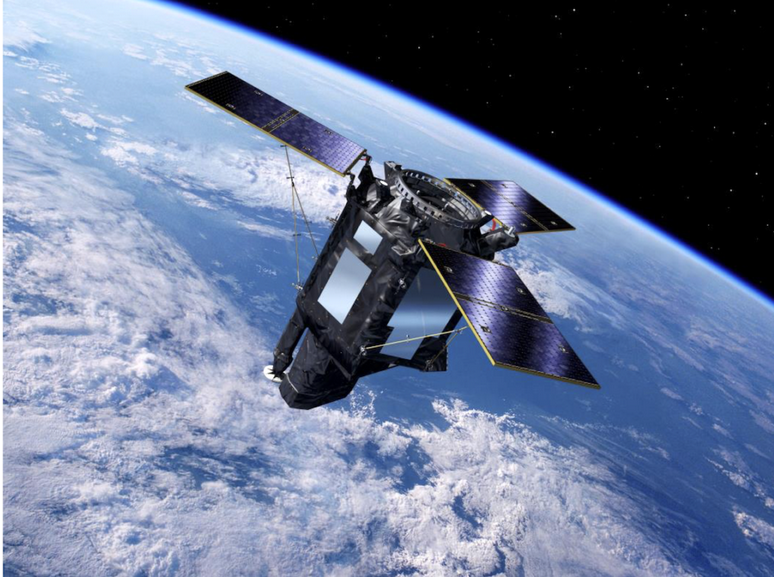
Arianespace‘s upcoming launch of the Vega flight celebrates a first; The two passengers on Arianespace’s upcoming Vega flight — will focus on the Earth and its dynamic atmosphere above thunderstorms — have been encapsulated within the launch vehicle’s protective fairing in preparation for a November 16 nighttime liftoff from the Spaceport in French Guiana.
This encapsulation process with the SEOSAT-Ingenio and TARANIS satellites was performed inside the Spaceport’s S5 processing facility, marking completion of the payload integration phase for Arianespace Flight VV17 – which will release the two European spacecraft into Sun-synchronous orbits. Both satellites will operate in similar orbits at an altitude of approximately 700 km.
The satellites’ arrangement places SEOSAT-Ingenio atop a dispenser system called VESPA (Vega Secondary Payload Adaptor), produced by Airbus in Spain for Vega launcher prime contractor Avio. Positioned inside the VESPA structure is TARANIS. This payload/dispenser/fairing combination – referred to as the “composite” – is now ready for installation atop the launch vehicle.
To be deployed 54 minutes after Vega’s liftoff, SEOSAT-Ingenio is the first Spanish Earth observation satellite – designed to provide information for national applications in cartography, land use, urban management, water management, environmental monitoring, risk management and security.
SEOSAT-Ingenio was built by an industrial consortium of Spanish space-sector companies led by Airbus Defence and Space. It is being launched for the European Space Agency (ESA) at the benefit of Spain’s CDTI (Center for Development of Industrial Technology).
The Spanish Instituto Nacional de Técnica Aeroespacial (INTA), will own and operate the satellite – which has an estimated liftoff mass of 788 kg.
In a shift from typical payload processing practices at the Spaceport, SEOSAT-Ingenio has undergone its preparations with a see-through protective cover made of conductive material, which ensures an extra-high degree of cleanliness. The cover was removed just prior to SEOSAT-Ingenio’s encapsulation in Vega’s payload fairing.Vega’s deployment of TARANIS at 1 hour, 42 minutes into the mission will mark the conclusion of Arianespace Flight VV17.

Launched for the French CNES space agency as its customer and spacecraft prime contractor, TARANIS is the first satellite designed to observe the mysterious red sprites, blue jets, elves and sprite halos that occur at altitudes of 20 to 100 km. above thunderstorms. More formally known as transient luminous events (TLEs), they are categorized as luminous, radiative and electromagnetic phenomena.
During the course of its mission, TARANIS will overfly thousands of transient luminous events – detecting these occurrences and recording their luminous and radiative signatures at high resolution. In addition to its role as a fundamental research satellite, data on Earth’s thermal and climate mechanisms to be gathered by TARANIS could serve more operational applications such climatology and weather forecasting.
Liftoff mass of the spacecraft, which is part of CNES’ family of Myriade small satellites, is estimated at 175 kg. The spacecraft is named TARANIS after the Celtic god of thunder and lightning, and also is the acronym of: Tool for the Analysis of RAdiation from lightNIng and Sprites.
Flight VV17 will be Arianespace’s seventh mission this year using members of its launcher family. It follows three previous flights in 2020 with Ariane 5, two using Soyuz, and Vega’s September success that validated the Small Spacecraft Mission Service (SSMS) shared launch concept.
Follow Arianespace’s launch activity at: http://www.arianespace.com.
